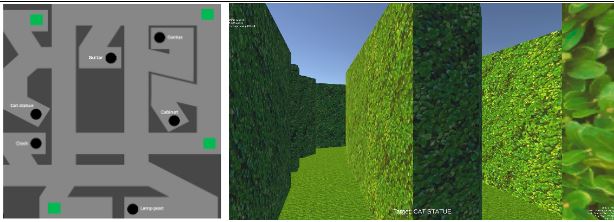We use cookies on this site to enhance your experience.
By selecting “Accept” and continuing to use this website, you consent to the use of cookies.
Search for academic programs, residence, tours and events and more.
Humans are prone to explore their environment and all it has to offer. Navigation is a behaviour we as humans engage in daily. From home to work or maybe even the grocery store, getting to where we want to go in a timely manner enables us to live independent lives. Even though we typically rely on technology like a Global Positioning Sattelite (GPS) enabled device to assist us to get from one place to another, technology can sometimes fail us, and we become forced to rely on spatial memory. Spatial memory is an important tool that helps us navigate the activities of our daily lives.
As we age, navigating through our environment becomes increasingly more difficult. The effects of aging are inevitable, as ‘normal’ aging leads to a decline in cognitive and physical abilities, which can impair spatial memory. People who experience a form of memory impairment such as Alzheimer’s disease (AD) or mild cognitive impairment (MCI) exhibit a significant decline in their abilities. The ability to navigate remains relatively intact (with minor impairment) for those aging ‘normally’, but for individuals diagnosed with a form of cognitive impairment, navigation is moderately or severely compromised. At times, individuals may become ‘lost’ in their environment and are unable to navigate to a destination. They cannot find their way home. This becomes worrisome, not only for the safety of the individual but for their loved ones. Ultimately, these compromised navigational abilities are linked to a decline in memory, therefore it is crucial to determine ways to prevent this decline. Although some medications can lessen memory impairment, they are often avoided as they are expensive, require the consumer to remember to take them, and are associated with countless side effects such as fatigue, nausea, and insomnia.
Research suggests exercise can enhance memory, without the negative side effects commonly associated with medication usage. Moreover, Dr. Tom Hazell, an associate professor at Wilfrid Laurier University and colleagues have noted that high-intensity exercise may be more beneficial to the brain health of young adults when compared with exercise of low-intensity. However, what remains unclear is why does high-intensity exercise benefit brain health, particularly memory. Some research suggests that lactate, a naturally occurring substance found within our body (mainly stored in our muscles and blood) may initiate a cascade of events that results in enhanced spatial memory. Lactate is produced when your muscles undergo vigorous stressors (i.e., intense exercise). In other words, your body will not produce lactate after a brisk walk to the park, rather you must expel lots of energy in short succession to produce lactate. To clarify this hypothesis, my project will monitor lactate levels in the body and correlate them with spatial memory performance before and after high-intensity exercise.
To assess spatial memory, individuals will complete a navigational task in a virtual reality (VR) hedge maze (refer to images below). Individuals will navigate through the maze to locate certain objects as quickly as possible. If individuals show improvements by locating objects in the maze faster following a single bout of high-intensity exercise, this may suggest that this form of exercise can be used as a non-medicinal way to enhance spatial memory. In addition, if high levels of lactate are observed when an individual is performing optimally, this may indicate that lactate plays a critical role in spatial memory.

I hope my research will shed light on the advantageous effects of high-intensity exercise and provide evidence to encourage individuals to engage in this type of exercise more frequently. By doing so, we may not only be able to improve our brain health, but also our overall health and memory throughout our lifespan.
Gabriel Massarotto is a Master of Science (MSc) in Kinesiology student at Wilfrid Laurier University, where he also received a Bachelor of Kinesiology (BKin).
Gabriel’s primary research interest is exploring the effect of exercise on functions of the brain, such as memory and learning. He was awarded two Undergraduate Student Research Awards (USRAs), which allowed him to complete research projects during his undergraduate degree. One project included conducting a literature review regarding the effect of various types of exercise on the health and functioning of individuals diagnosed with mild cognitive impairment (MCI).
Gabriel is actively involved in the community, working alongside organizations that provide physical activity programming to populations experiencing cognitive and/or physical impairments in their everyday lives. He previously worked at Supporting Neurodiversity through Adaptive Programming (SNAP), which is a support program affiliated with Brock University. At SNAP, developmentally appropriate physical activity programs are designed and then administered to children and youth with disabilities. In addition, Gabriel is currently working with Alzheimer's Society (AS). AS, like SNAP, encourages individuals who experience cognitive impairments to become physically active through their Minds in Motion program, while connecting with their peers, to enhance their overall well-being. Gabriel hopes to further his education and practical experiences in the rehabilitation sciences to assist individuals living with disabilities.